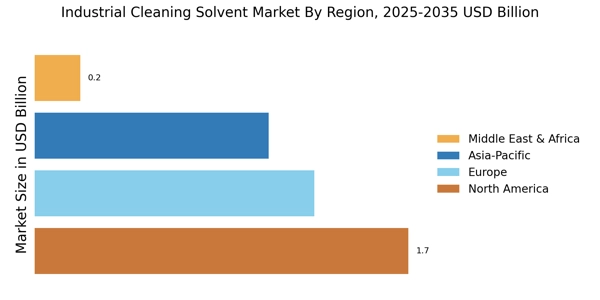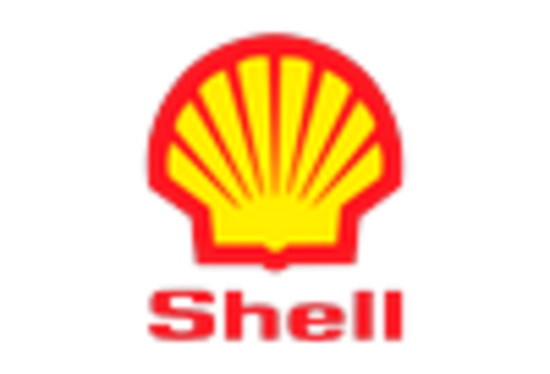Growth of the Electronics Sector
The Industrial Cleaning Solvent Market is significantly impacted by the growth of the electronics sector. As electronic devices become more complex, the need for specialized cleaning solvents to remove contaminants during manufacturing processes is increasing. In 2025, the electronics industry is projected to grow at a rate of approximately 5.5%, driven by advancements in technology and rising consumer demand for electronic products. This growth necessitates the use of high-purity cleaning solvents that can effectively clean sensitive components without causing damage. As the electronics sector continues to expand, the Industrial Cleaning Solvent Market is likely to benefit from the heightened demand for effective cleaning solutions tailored to this industry.
Rising Demand from Manufacturing Sector
The Industrial Cleaning Solvent Market experiences a notable surge in demand driven by the manufacturing sector. As industries strive for operational efficiency, the need for effective cleaning solutions becomes paramount. In 2025, the manufacturing sector is projected to account for a substantial share of the market, with estimates suggesting a growth rate of approximately 4.5% annually. This growth is attributed to the increasing complexity of machinery and equipment, necessitating regular maintenance and cleaning. Furthermore, stringent regulations regarding cleanliness and safety standards in manufacturing facilities further bolster the demand for industrial cleaning solvents. As manufacturers seek to enhance productivity and ensure compliance, the Industrial Cleaning Solvent Market is likely to witness sustained growth in the coming years.
Technological Innovations in Cleaning Solutions
Technological innovations play a pivotal role in shaping the Industrial Cleaning Solvent Market. The development of advanced formulations and cleaning technologies is enhancing the effectiveness and efficiency of cleaning solvents. In 2025, the market is projected to benefit from innovations such as biodegradable solvents and formulations that require less water and energy for application. These advancements not only improve cleaning performance but also align with sustainability goals. As industries seek to optimize their cleaning processes, the demand for innovative cleaning solutions is likely to rise. Consequently, the Industrial Cleaning Solvent Market is expected to experience growth driven by these technological advancements.
Expansion of Automotive and Aerospace Industries
The Industrial Cleaning Solvent Market is significantly influenced by the expansion of the automotive and aerospace industries. These sectors require high-performance cleaning solvents to maintain equipment and ensure product quality. In 2025, the automotive industry is expected to grow at a rate of around 3.8%, while the aerospace sector may see an increase of approximately 5.2%. This growth is driven by rising consumer demand for vehicles and advancements in aerospace technology. Consequently, the need for specialized cleaning solvents that can effectively remove contaminants and residues from complex components is becoming increasingly critical. As these industries evolve, the Industrial Cleaning Solvent Market is poised to benefit from the heightened focus on cleanliness and maintenance.
Regulatory Compliance and Environmental Standards
The Industrial Cleaning Solvent Market is shaped by stringent regulatory compliance and environmental standards. Governments worldwide are implementing regulations aimed at reducing the environmental impact of industrial processes. In 2025, it is anticipated that compliance with these regulations will drive the demand for eco-friendly cleaning solvents. The market is likely to see a shift towards solvents that meet low volatile organic compound (VOC) emissions standards. This transition not only aligns with environmental goals but also enhances workplace safety. As industries adapt to these regulations, the Industrial Cleaning Solvent Market is expected to witness a transformation, with an increasing emphasis on sustainable and compliant cleaning solutions.


















Leave a Comment